In Part 1 of Road-Ready Tips for Hauling Horses, we looked at routine cleaning and checking of your horse trailer. In Part 2, we’ll look at the maintenance that needs to be performed before your first trip of the season.
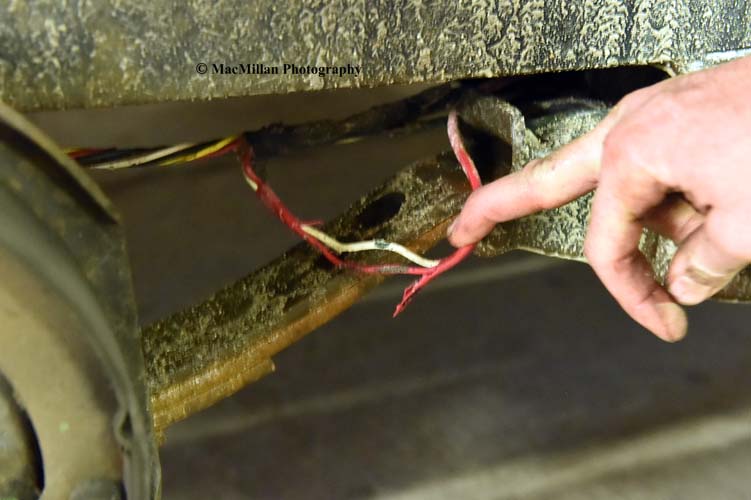
Inspect Trailer Wiring and Lights Before Hauling
Whatever the reason, make sure you thoroughly check your trailer wiring before hauling horses, especially after long periods of storage. Without working electrical connections, your lights and brakes won’t work.
Mae Jean Fichter of Lexington, Kentucky, a long-time horsewoman and custom hauler with over 40 years of experience, emphasizes that it is very important to check all the lights on your trailer before leaving on a trip.
“A lot of times when you have a flat tire on your trailer the tires will peel off and it can take out your wiring too,” she explains. “Check all of the lights and directional signals; your running lights are very important too.”
If a light on your trailer doesn’t work, it may be a fuse, the wiring, or a light bulb. Check the fuses first, then check over integrity of the wiring along the length of the trailer and in the light fixtures and, finally, replace the bulbs as needed. Most state and province laws require working brake lights and signals and that at least one tail light is working on your trailer in order to be legal.
Give the Trailer Floor a Once-Over
When you take the mats out of your trailer to wash them, check the floor for weak spots that need to be fixed. Both Fichter and Bill Zahm of Zahm’s Trailer Sales advise that if the trailer floor is made of wood to take a pocket knife or screw driver and poke the flooring in several places observing how far you can insert the blade. If the wood is soft and flakes away easily, sags or looks rotted, you should replace the floor boards before your first trip of the year.
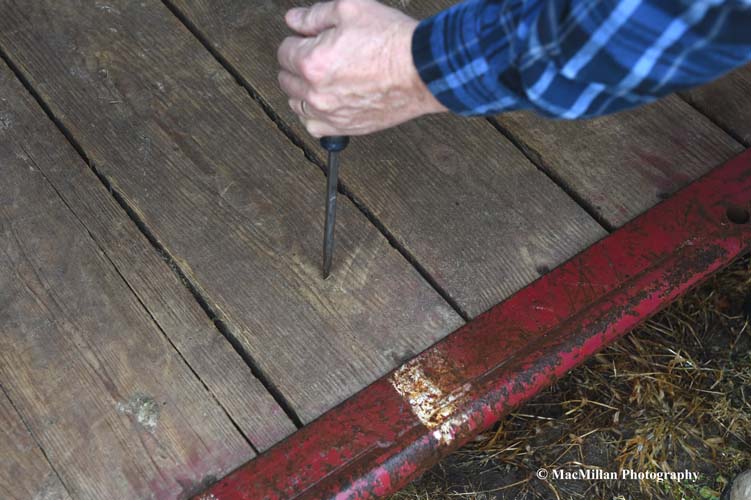
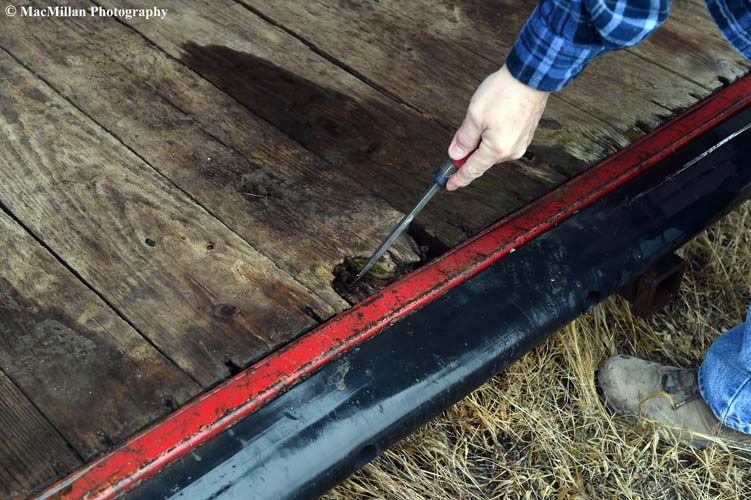
Even if your trailer floor is made of metal, it should be checked over carefully for structural integrity before hauling horses. Don’t forget to check the welds joining the structural pieces of the trailer floor and sides and slide under your trailer to look at the floor and running gear from the bottom. I’ve heard a number of horror stories of horses putting a foot through the trailer floor while being transported, so trailer flooring in good repair is essential.
If your trailer has a ramp for loading, look at that big spring hinge along the bottom. It probably looks a little rusty since it gets covered with manure every time you clean out the trailer. Get a can of spray lubricant and douse along the entire length. Then lift and lower the ramp. Is it smoother and quieter? You have just prolonged the life of this very useful lift assist. Repeat this several times a year.
Check Over the Hitch Before Hauling Horses
The hitch receiver on the back of your truck, the hitch that fits into the receiver, and the corresponding hitch connection on your trailer can be serious weak links if they don’t stay connected. Fichter cautioned to make sure that the pin that goes through the hitch receiver, then through the hitch to secure the hitch to your truck, is actually in place.
Fichter shared a story of a truck hitch that had been recently serviced and the pin had not been securely fastened into place after the work. The horse owner turned out of the driveway only to see their trailer passing them on the road! Luckily they were not going fast, the trailer glided to a stop in the ditch, and the horses were fine. But it could have ended badly. I’ve also heard stories of hitch pins being stolen at shows, so consider a locking hitch pin or make it routine to check that the pin is in place every time before hauling horses.
While you’re looking over your bumper hitch system, Todd Little, a maintenance professional at Zahm’s Trailer Sales, suggests doing maintenance lubrication on the working parts of the trailer hitch on both the truck and trailer. If you’re using a gooseneck trailer, inspect the working parts of the hitch in your truck bed and on the front of the trailer. Check each part for wear and tear and repair or replace anything that isn’t working at full capacity.
Little says to carefully inspect the inside of the hitch coupler (the metal “hat” on the front of the trailer that fits over the ball of the hitch on your truck). If the coupler is worn inside and doesn’t fit securely over the ball so that the connection is locked, the truck and trailer may come apart.
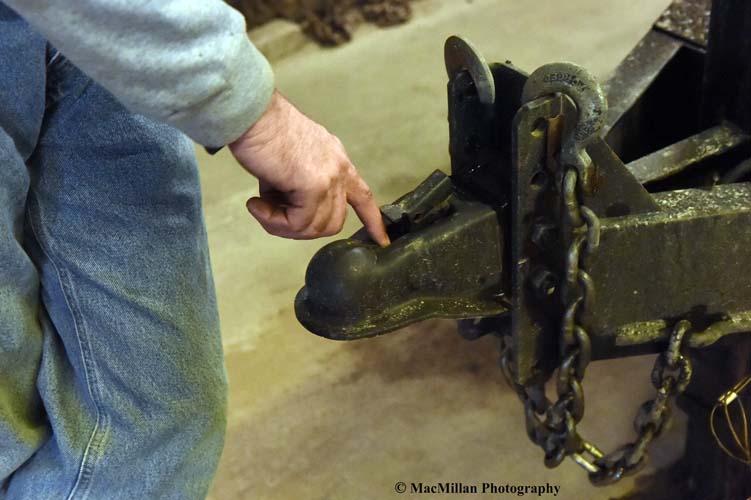
Be sure the hitch ball is the correct size to correspond to your trailer coupler. Fichter also cautions to examine the hitch ball to make sure it is securely fastened into the hitch on the back of your truck. She warns that the hardware securing the ball to the hitch can loosen or even go missing over time.
Finally, make sure that your safety chains and your breakaway battery are in good working order. Safety chains run from the front of the trailer to the bumper of the truck and are the first safeguard if the truck and trailer separate. The breakaway battery on the trailer has a cable attached to it that hooks to your truck.
If the truck and trailer separate the cable breaks away engaging the battery which activates the trailer brakes. These chains and battery are usually required by law on trailers over 3,000 pounds and are peace of mind as you roll down the road.
Examine Brakes and Wheels
Based on the mileage you drive your truck and trailer, you should have the brakes and wheels checked and serviced on a regular basis. Tom Shreve, co-author of The Complete Guide to Buying, Maintaining and Servicing a Horse Trailer, recommends new trailers have the brakes adjusted after the first 200 miles and then checked every 3,000 miles after that.
An easy driving test of your trailer braking system is to hook up and pull the trailer at a slow speed on a level road, then slide or pull the lever on the trailer brake control in your truck to see if the trailer brakes engage to slow down the trailer wheels.
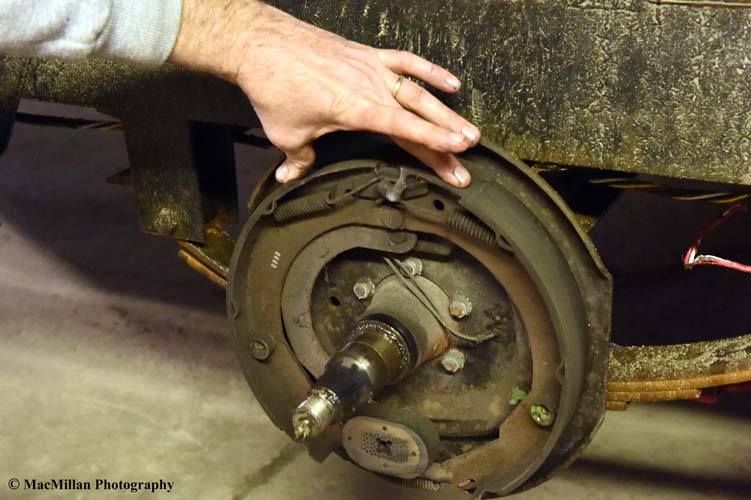
According to Little, most trailer brakes are electric drum brakes, but some newer trailers are using disc or hydraulic brakes. Sometimes the magnetic brake controls freeze up and don’t function properly, especially when trailers are stored for long periods. After the brakes have been checked and repaired, they will need to be re-adjusted in order to switch on at the right time.
Little recommends having the wheel bearings re-packed and looking at the brakes from the inside of the wheel every ten thousand miles or at least every other year if you don’t use your trailer much. This involves pulling off the tires and rims and looking at the inside of the wheel.
Each wheel has two sets of bearings, front (inboard) and back (outboard). The bearings must spin freely in order for the wheel to go around without much resistance (resistance causes the wheels and tires to heat up and wear out faster). Properly functioning wheel bearings are not only important in preserving your tires; in severe cases of bearing failure a wheel can actually break loose and fly off the vehicle!
Little says you can lubricate the wheel bearings from the outside by using a grease gun to pump wheel bearing grease (the type of grease you use is specific to this task; it is important you use grease that can hold up to high temperatures) into the “easy lube” holes on the wheels. Although, he cautions to be careful if you do this since pumping in too much grease can actually contaminate the brake surface which needs to stay clean and grease free. He favors pulling the wheels apart to give you a better idea of what is going on inside.
“It’s a good idea to look inside the wheel, because you get to inspect the bearings, grease them well and to put a new seal on each bearing,” says Little. “Every time you open up the wheel you might as well put in a new seal.”
Another thing that should be checked on your trailer when it is in the shop is the suspension system, whether leaf springs are used or a more sophisticated torsion axle suspension system.
Avoid Tire Trouble when Hauling Horses
In The Complete Guide to Buying, Maintaining and Servicing a Horse Trailer, Tom Shreve says that trailer tires will usually only last six or seven years. Jeff Wertenberger, second generation owner and tire expert at the 51-year-old Wertenberger Tire company, Huntington, Indiana, says he agrees that replacing your trailer tires within this time frame would cut out many tire failures. He lists the leading causes for failure of trailer tires: under-inflation and age.
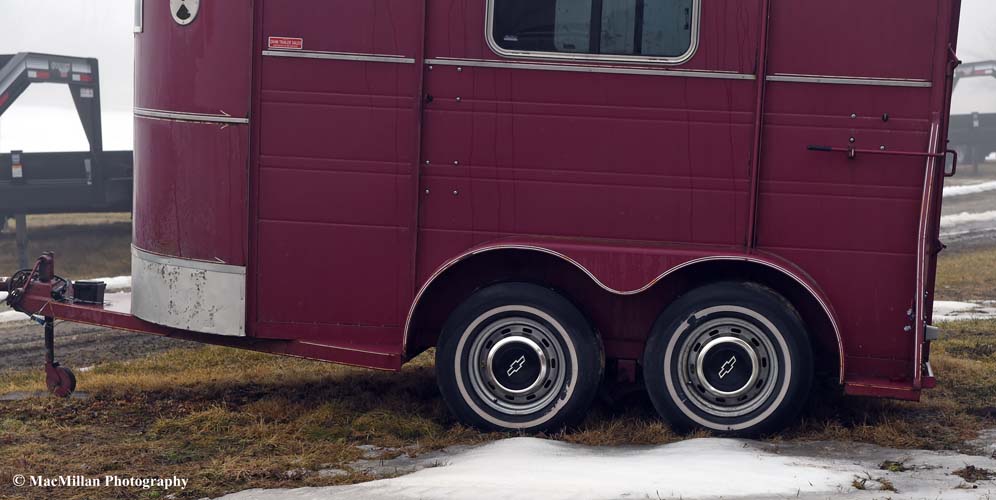
“In many cases people do not use their horse trailer everyday as they would a vehicle,” says Wertenberger. “It is very easy to forget to inflate the tires to the proper level. If a tire runs underinflated, it will run hotter, which will lead to premature demise. Also, as a trailer tire gets older, we see a larger percentage of failures. You can see the date the tire was manufactured by the last four digits of the serial number. For example, if the numbers are ‘5212’, the tire would have been built in the 52nd week of 2012.”
When examining your tires, check over the sidewalls as well as the tread depth, valve stem and tire pressure. Make sure to look up the proper tire pressure for your tires; the recommended PSI is typically located on the sidewall. Wertenberger explains that once tire tread depth wears down to 2/32 of an inch, it’s illegal to keep using it in many states. However, most trailer tires will wear out from aging (dry rot, sun damage, etc.) while sitting between uses before the tire depth is worn down that far. Storing your tires out of direct sunlight will prolong their life.
Doing your homework when selecting trailer tires is important too. Wertenberger says to select a tire that is built specifically for use on a trailer and make sure you have a tire with the correct load rating for your trailer size and function; these have an “ST” designation.
“A vast majority of ST tires are imported,” Werternberger says. “However, we see a lower percentage of tire failures in cases where a large U.S. rubber company is watching the tires being built. Also you can look for additional features in tires that allow them to resist heat better. One example of this would be heat shield technology using special polymers to improve performance by resisting heat. Another example would be nylon overlays. Nylon overlays over the steel belts contract when they get warm. This holds the belt package in a better position and leads to fewer tire separations,” says Wertenberger.
Lastly in the tire category, do not leave home without a spare tire in good condition for both your truck and trailer. Don’t forget to check the pressure level in the spare too!
Lubricate the Parts That Move
Besides lubricating the moving parts of the hitch and roof vents, don’t forget to apply some oil to door hinges, latches, handles, and other parts on your trailer that are supposed to move to work properly.
Don’t Forget Tow Vehicle Maintenance
Make sure that your hauling vehicle goes in for regular oil changes, tune-ups and transmission, brake and tire checks. As with your trailer, check to make sure all of your truck lights are working and that the tires are in good condition and properly inflated. Make sure to have a good spare tire along too. Don’t forget to check fluid levels on the engine oil, radiator fluid, transmission fluid, and windshield wiper fluid before setting out on a trip.
Read Part 1 of Road-Ready Tips for Hauling Horses
In Part 3 of Road Ready Tips for Hauling Horses, we’ll look at how to prepare for emergencies on the road and what you should do before each trip hauling horses.





